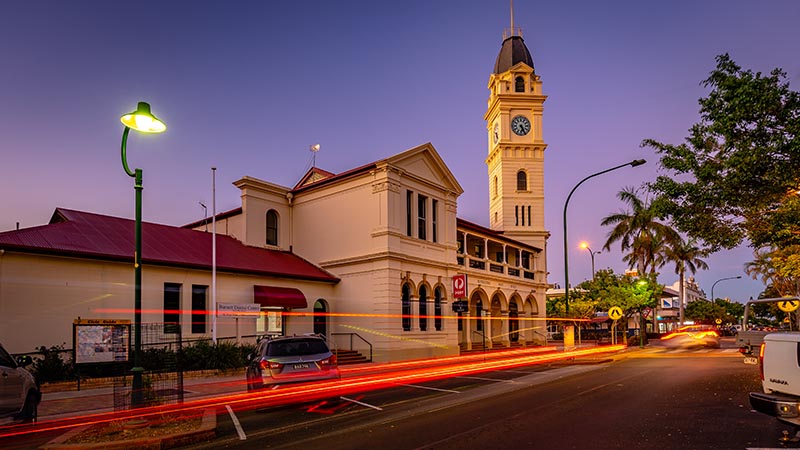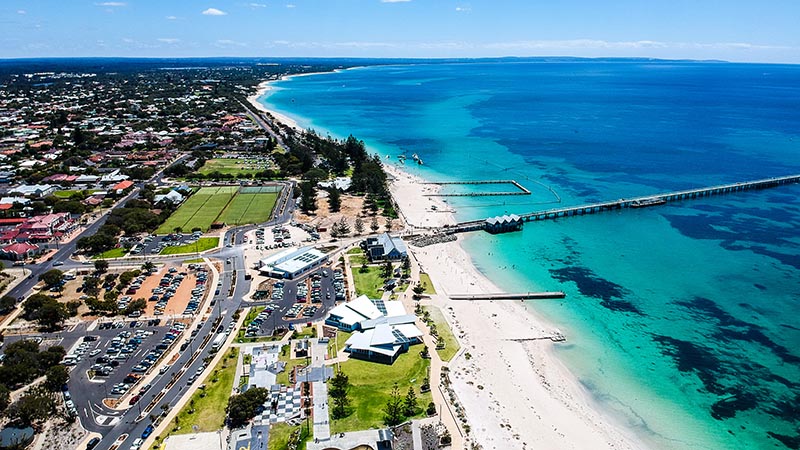Regional resurgence as property prices outpace capital cities
Led by Western Australia and Queensland, regional property prices have in the past quarter completed a rare feat in outperforming capital city real estate markets.
Regional property prices are now outpacing the capital cities, in a trend rarely seen outside the Covid years of urban escapism.
The reversal of fortunes between the cities and regions has been driven largely by double-digit annual growth in the migration magnets of Western Australia and Queensland.
Dwelling values in regional Australia recorded a quarterly increase of 1.2 per cent in the three months to January 2024, compared to the capital cities’ 1.0 per cent increase over the same period.
Capital growth remains varied across Australia’s 50 largest significant urban areas (SUAs), however, many of the standout performers are in WA and Queensland.
WA’s coastal towns of Albany and Bunbury recorded the highest quarterly rises, with value growth of 7.7 per cent and 6.2 per cent respectively, ahead of Northern NSW’s Lismore (5.5 per cent), and Townsville (4.7 per cent) in Queensland’s North.
Only six SUAs recorded an annual increase of 10 per cent or more including WA’s Bunbury (15.8 per cent), and Central Queensland’s Bundaberg (12.0 per cent) and Rockhampton (12.0 per cent).
Properties are selling faster, with five regions falling below the 20-day median time-on-market benchmark.
Bundaberg, Queensland (15 days) recorded the shortest median time on market, followed by, 400 kilometres further south, Toowoomba (17 days), with WA’s Bunbury, (18 days) and Busselton (19 days), and Cairns also at 19 days.
At the other end of the scale, Batemans Bay, NSW (75 days) continued to record the longest median selling time, while sellers in Bowral-Mittagong, NSW (-6.7 per cent) offered the largest discounts in order to secure a sale.
Almost half of all regional sales in the most recent month measured, November, were for properties priced between $400,000 and $600,000.
Sales volumes are well down on the peak for the same month in previous years which occurred in 2018.
Regional hotspots share common traits
Regional cities and towns attracting population growth had correspondingly high performing property markets.
In Western Australia, Busselton was the top performing regional centre for the December 2023 quarter, according to the latest data from REIWA.
Its median house sale price rose 4.2 per cent to $715,000, up from $686,000 in the September quarter.
REIWA President Joe White said several factors were underpinning price growth in Busselton.
“The rental shortage is driving the lower end of the market as people look to buy a home and get off the rental roundabout,” he said.
“Population growth and the rush to the regions are the other factors. The state is seeing strong population growth overall and the fantastic South-West lifestyle continues to draw people to Busselton.
“And you can’t underestimate the ongoing impact of the airport on the region.
“With three mining companies flying out of Busselton there has been a strong influx of FIFO workers and their families to the area.
“The high demand for homes is reflected in the number of sales in the December quarter, which were 19.0 per cent higher than the September quarter and 5.3 per cent higher than the same time in 2022.”
In the past I would have seen the current regional property upturn as part of a wider cycle of large ups and downs but the data is suggesting that this time is different.
- George Kafantaris, CBS Property
Annually, Port Hedland recorded the most growth among WA’s nine broadly defined regional markets, with its median house sale price rising 14.1 per cent over the year to $523,086. Bunbury was the next best performer over the year with a 9.5 per cent increase in its median house sale price.
A similar scenario is playing out in Townsville, which Knight Frank Senior Partner Townsville and Mackay, Craig Stack, said could have one of the strongest growth rates in Australia over the next two years.
“Continuing strong demand for the low supply of existing housing in Townsville will lead to price growth, and we think the median sale price for existing homes will grow very strongly over the next two years,” Mr Stack said.
“In fact, the growth in Townsville’s median house price may become one of the strongest in Australia due to the demand-supply imbalance, with demand to grow exponentially as people move to the region to work on major projects commencing in 2024.
“Median prices have grown by five to seven per cent in each of the past three years, but growth rates may be up around 10 per cent next year, especially if interest rates retreat.”
“We believe rental growth will be very high in Townsville throughout 2024 because of the strong demand for employees, with many companies likely to lease housing on behalf of employees so they can fill positions.”
The median price in Townsville is currently $430,000, while the median rent for a three-bedroom house is currently $450, according to Residential Tenancies Authority data for December 2023.
Is this regional property cycle different?
George Kafantaris, Managing Director, CBS Property, said relative affordability and ever-dwindling housing supply was driving regional property markets and that often volatile price fluctuations may give way to steady capital growth.
“In the past I would have seen the current regional property upturn as part of a wider cycle of large ups and downs but the data is suggesting that this time is different and price growth will remain strong well into 2025.
Mr Kafantaris said the current market is still relatively affordable compared to the main capital cities, which have started to stabilise.
“The starting base is lower, so all dollar increases will result in a higher percentage increase as opposed to areas starting with a higher base price.
“But there’s no denying that regional areas with the advantage of having multiple drawcards, such as employment, lifestyle and improved infrastructure will continue to attract strong net migration and subsequent property price pressure.”
“The speed of new housing supply simply cannot keep up with demand.”
CoreLogic Research Director Tim Lawless the regions with a diverse economic base and are generally supported by a mixture of agriculture, tourism, ports and mining were the best performers.
Not all regions had buoyant property markets.
Tasmania’s Launceston (-2.3 per cent) and Devonport (-2.0 per cent) recorded the largest quarterly falls. Annual declines were recorded in 11 regional markets across Victoria, Tasmania and NSW, where the coastal market of Batemans Bay (5.8 per cent) had the largest annual decline.
“The weakness across Tasmanian housing markets is broad-based but follows a solid run of growth with values up 91 per cent over the past decade,” Mr Lawless said.
“A combination of affordability constraints following the pandemic surge in values, negative interstate migration and a normalisation in internal migration rates are other factors that are likely contributors to the softer conditions across regional Victoria and regional Tasmania.”


























